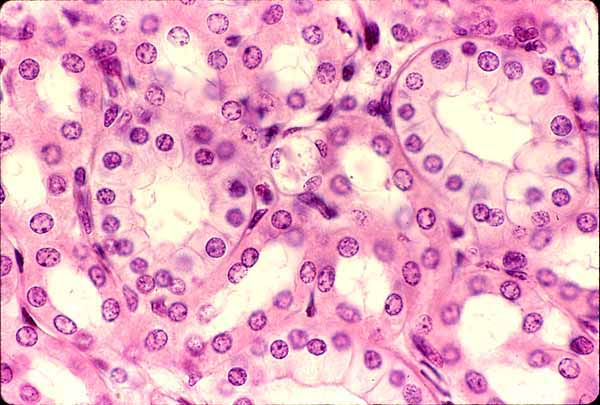

Kidney, epithelium and connective tissue

Simple cuboidal epithelium forms the many tubules which comprise the medulla of the kidney.
The kidney has the basic organization of a compound gland, but specialized to exaggerate the function of the glandular ducts.
Each functional unit of the kidney begins with a glomerulus into which blood plasma is filtered. The filtrate drains into a long tubule, along which various components of the fluid are actively or passively resorbed, leaving only waste and excess to be excreted as urine.
Two distinctly different types of cuboidal epithelium are evident in this image.
Cuboidal epithelial cells with eosinophilic (i.e., pink) cytoplasm belong to the ascending limb of the loop of Henle.
Cuboidal epithelial cells with relatively unstained (i.e, pale) cytoplasm belong to collecting ducts, which are larger than the tubules of the loop of Henle.
A third type of tubule may also be noticed, lined by simple squamous epithelium. This represents the descending limb of the loop of Henle.
Connective tissue within the kidney is limited to an inconspicuous stroma which invests each tubule and the associated blood vessels.
In this specimen, it is difficult to distinguish whether the various flattened or elongated stromal nuclei (accentuated in the thumbnail image at left) belong to connective tissue fibroblasts or to capillary endothelial cells, but they are clearly distinct from the round to oval nuclei of the tubule epithelium.
Comments and questions: dgking@siu.edu
SIUC / School
of Medicine / Anatomy / David
King
https://histology.siu.edu/intro/RN006c.htm
Last updated: 8 June 2022 / dgk